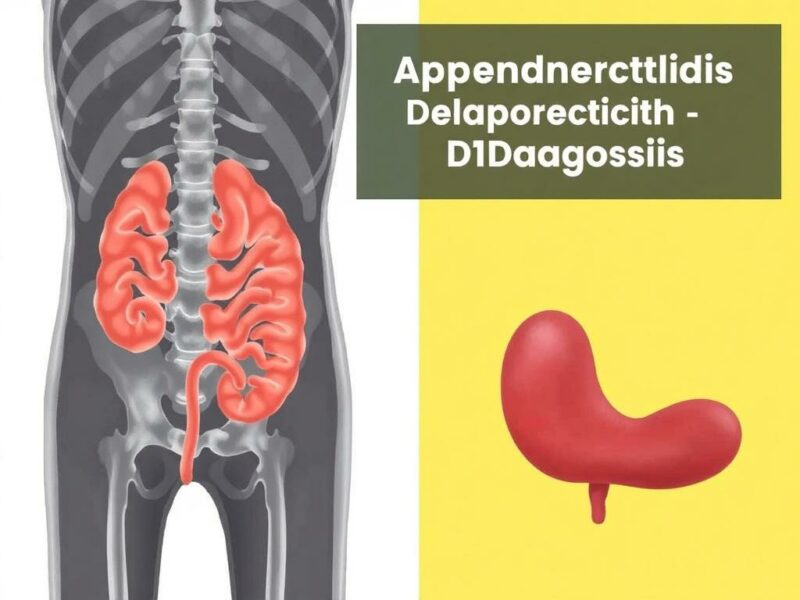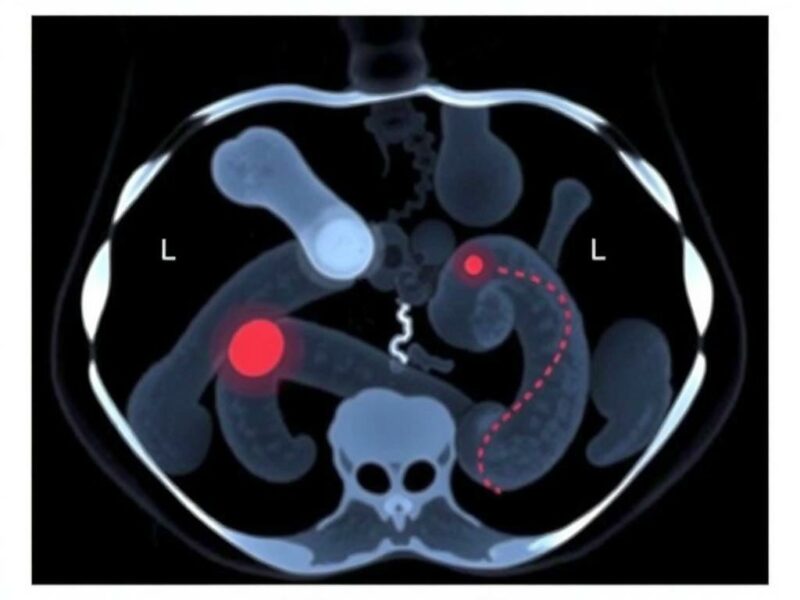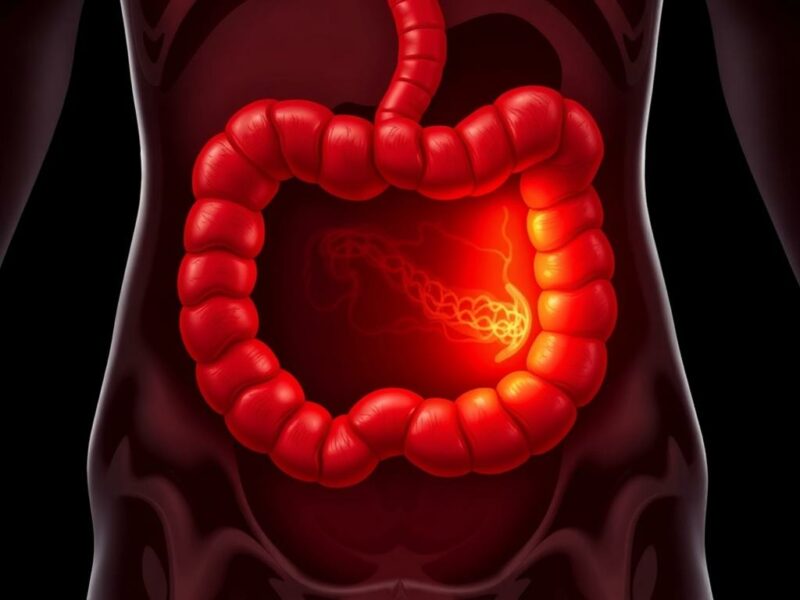Delayed appendicitis diagnosis is a critical issue in healthcare that can have serious consequences for patients. Appendicitis, an inflammation of the appendix, is a common emergency requiring swift identification and treatment. However, delays in diagnosis occur more often than many realize, often leading to complications like rupture, infection, and prolonged hospital stays. In this article, we will explore the causes of delayed appendicitis diagnosis, how it affects patient outcomes, methods to improve diagnostic accuracy, and the importance of awareness among both healthcare providers and patients.
What is Appendicitis and Why Timely Diagnosis Matters?
Appendicitis happens when the appendix, a small pouch connected to the large intestine, becomes inflamed—usually because it’s blocked by mucus, stool, or a foreign body. This blockage causes bacterial growth, swelling, and intense pain. Without treatment, the appendix can burst, spilling harmful bacteria into the abdominal cavity and causing peritonitis, a severe and potentially life-threatening infection.
The window for effective treatment usually narrows quickly from the onset of symptoms. When appendicitis is caught early, typically by performing an appendectomy (removal of the appendix) or antibiotic therapy, patients often recover without complications. But when diagnosis is delayed, the risk of complications skyrockets. This makes recognizing the symptoms and promptly diagnosing appendicitis absolutely essential.
Why Does Delayed Appendicitis Diagnosis Occur?

Several factors contribute to delayed appendicitis diagnosis. It’s important to understand these because they can help both patients and doctors identify warning signs earlier and reduce the risk of serious outcomes. Some of the common reasons for delay include:
- Non-specific symptoms: Early appendicitis symptoms can mimic other conditions like gastroenteritis, urinary tract infections, or even menstrual cramps. This overlap can confuse diagnosis.
- Variability in pain presentation: The classic symptom of sharp pain in the lower right abdomen isn’t always present, especially in children, elderly patients, and pregnant women.
- Inaccurate or incomplete clinical evaluation: Sometimes doctors rely heavily on physical exams without using imaging, leading to missed diagnoses.
- Limited access to diagnostic tools: In some healthcare settings, especially rural or under-resourced areas, access to ultrasound or CT scans may be limited.
- Patient factors: Delay in seeking medical help, language barriers, or miscommunication can also contribute.
Each of these points highlights how complex the diagnostic process can be and why relying solely on symptom checklists may not be sufficient.
Common Symptoms and Signs of Appendicitis to Watch For
Since delayed appendicitis diagnosis often stems from overlooked or misunderstood symptoms, becoming familiar with the usual and atypical presentations can help. Common symptoms typically include:
| Symptom | Description | Notes |
|---|---|---|
| Abdominal pain | Initially vague around the navel, then shifting to sharp lower right abdominal pain | Pain location may vary, especially in children and pregnant women |
| Nausea and vomiting | Often follows the onset of pain | May be mistaken for other causes of stomach upset |
| Loss of appetite | Common early symptom | Often overlooked by patients as insignificant |
| Fever | Mild to moderate, usually appears after pain has started | Higher fever may indicate rupture or abscess |
| Rebound tenderness | Pain felt upon release of pressure on the abdomen | Used in clinical exams, but not always reliable |
When these symptoms aren’t immediately recognized or appear atypically, it can contribute directly to a delayed appendicitis diagnosis.
Diagnosing Appendicitis: Techniques and Challenges
The diagnosis of appendicitis primarily involves a combination of clinical assessment, laboratory testing, and imaging studies. Yet, each method has strengths and limitations that influence how quickly and accurately the diagnosis can be made.
Clinical Assessment
Doctors first look at patient symptoms and conduct a physical exam. The “classic” signs such as tenderness at McBurney’s point (lower-right abdominal area) can point towards appendicitis. However, there are many cases where symptoms don’t fit the textbook description, especially in young children or elderly individuals, making clinical judgment less straightforward. Physicians may use scoring systems like the Alvarado score to estimate the likelihood of appendicitis, but even these aren’t foolproof.
Laboratory Tests
Blood tests looking for elevated white blood cell counts and inflammatory markers are standard. While an elevated count can support suspicion of appendicitis, it is not definitive—some patients with appendicitis may have normal values in the early stages. Other lab tests like C-reactive protein (CRP) can also assist but should be used alongside other evidence.
Imaging
Imaging is crucial in confirming or ruling out appendicitis, particularly when clinical and lab findings are inconclusive. Common imaging techniques include:
- Ultrasound: Often used, especially in children and pregnant women since it avoids radiation. The challenge is that it can be operator-dependent and sometimes fails to visualize the appendix clearly.
- CT scan: Provides more detailed images and is considered the gold standard in many settings. However, concerns about radiation exposure, cost, and access limit its universal use.
- MRI: Occasionally used when radiation must be avoided but less commonly due to availability and cost.
Delayed appendicitis diagnosis can occur when imaging is delayed, unavailable, or misread, underscoring the importance of timely and accurate radiologic evaluation.
Who is Most at Risk for Delayed Diagnosis?

Understanding which patient groups are more vulnerable to delayed appendicitis diagnosis can improve vigilance in clinical practice. Key populations include:
- Children: Young children often have difficulty articulating symptoms, and their pain may be vague or diffuse, making diagnosis tricky.
- Elderly patients: May present with atypical symptoms or weaker immune responses, causing doctors to underestimate severity.
- Pregnant women: Shifting anatomy during pregnancy changes pain location and makes imaging more complex.
- Women of reproductive age: Pelvic and gynecological conditions often overlap in symptoms with appendicitis.
- Patients with communication barriers: Language differences or cognitive impairments can impede symptom reporting.
It’s vital that healthcare providers approach these groups with extra caution and consider appendicitis even when symptoms aren’t classic.
Consequences of Delayed Appendicitis Diagnosis
The impact of delayed appendicitis diagnosis is significant and can lead to various complications:
| Complication | Impact | Potential Outcomes |
|---|---|---|
| Appendiceal rupture | Increased risk of widespread infection and peritonitis | Extended hospital stay, intensive care, higher mortality risk |
| Abscess formation | Pockets of infection usually requiring drainage or prolonged antibiotics | Complicates recovery and may need multiple interventions |
| Sepsis | Systemic infection that can lead to organ failure | Life-threatening, requires aggressive treatment |
| Increased healthcare costs | Due to longer hospital stays and multiple treatments | Economic burden for patients and healthcare systems |
| Higher morbidity and mortality | Increased risk of long-term complications and death | Emphasizes the importance of early diagnosis |
Considering these severe outcomes, efforts to minimize diagnostic delays can directly save lives and improve quality of care.
Strategies to Reduce Delayed Appendicitis Diagnosis
Medical professionals and healthcare systems have developed several strategies to combat delayed appendicitis diagnosis:
Improved Clinical Training
Ongoing education about the variable presentations of appendicitis helps clinicians maintain high suspicion, especially for vulnerable populations. Case reviews and simulation training are valuable for maintaining diagnostic skills.
Enhanced Use of Diagnostic Tools
Promoting access to, and timely use of, ultrasound, CT, and sometimes MRI can reveal signs of appendicitis when physical exams are inconclusive. Digital decision support tools can assist clinicians in evaluating symptom patterns.
Patient Education
Raising public awareness about appendicitis symptoms encourages quicker medical consultation. Patients who recognize early signs are less likely to delay seeking care.
Standardized Protocols and Pathways
Many hospitals now implement clinical pathways, which involve defined steps and criteria for diagnosing appendicitis. This reduces variation in care and encourages rapid diagnosis.
Multidisciplinary Approach
Collaboration among emergency physicians, radiologists, surgeons, and primary care providers ensures comprehensive evaluation and minimizes diagnostic errors.
Case Studies: Real-Life Examples of Delayed Appendicitis Diagnosis
Understanding how delayed appendicitis diagnosis plays out in real life can illustrate its impact. Here are two anonymized case examples:
- Case 1: A 7-year-old boy presented with mild stomach pain and vomiting. Initially diagnosed with a stomach virus and sent home, his symptoms worsened overnight. On returning to the hospital, he was found to have a ruptured appendix and required intensive treatment.
- Case 2: A 35-year-old pregnant woman experienced vague abdominal discomfort. Because of her pregnancy, standard CT scans were avoided, and ultrasound failed to clearly show the appendix. Her diagnosis was delayed until severe symptoms forced surgery, revealing a complicated appendicitis.
Both cases highlight how nuanced symptoms and diagnostic challenges contribute to delay, reinforcing the need for vigilance.
Key Takeaways: Remembering the Importance of Early Appendicitis Diagnosis
To summarize the important points:
- Appendicitis requires prompt diagnosis to prevent serious complications.
- Symptoms can be variable and overlap with other conditions.
- Clinical exam, labs, and imaging all play roles but have limitations.
- Certain populations—children, elderly, pregnant women—are at higher risk for delayed diagnosis.
- Delayed diagnosis leads to worse outcomes, including rupture, abscess, sepsis, and death.
- Multifaceted strategies including education, protocols, and improved imaging can reduce delays.
Awareness, communication, and appropriate use of diagnostic resources are essential for improving outcomes for patients with appendicitis.
Conclusion

Delayed appendicitis diagnosis remains a significant challenge in healthcare due to the variable presentation of symptoms, limitations of diagnostic tools, and diverse patient populations. Yet, understanding the reasons behind these delays and actively implementing strategies—such as enhanced clinical training, timely imaging, patient education, and standardized protocols—can make a life-saving difference. Prompt recognition and treatment of appendicitis are not only crucial to avoid serious complications but also to ensure that patients experience quicker recoveries and better health outcomes. Whether you are a patient experiencing abdominal pain or a healthcare provider evaluating a complex case, keeping the possibility of appendicitis in mind and seeking or offering timely care remains paramount in reducing the risks associated with delayed diagnosis.



